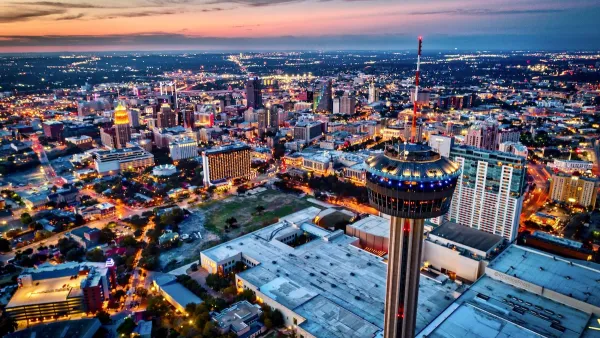In this reprinted excerpt from his 1999 book The Ecology of Fear, Mike Davis recounts the fire-prone history of Malibu and shows that development there has succumbed to repeated disastrous fires.
"Fire in Malibu has a relentless, staccato rhythm. The rugged coastline is scourged by a large fire, on average, every two and a half years, and at least once a decade a blaze in the chaparral grows into a terrifying firestorm consuming hundreds of homes in an inexorable march across the mountains to the sea. In one week last month, 10 homes and 14,000 acres of brush went up in smoke.
Such periodic disasters are inevitable as long as private residential development is tolerated in the fire ecology of the Santa Monicas. Make your home in Malibu, in other words, and you eventually will face the flames.
From the very beginning, fire has defined Malibu in the American imagination. Sailing northward from San Pedro to Santa Barbara in 1835, Richard Henry Dana described (in Two Years Before the Mast) a vast blaze along the coast of Jose Tapia's Rancho Topanga Malibu Sequit. Despite (or, perhaps, because of) Spanish prohibition of the Chumash and Gabrielino Indians' practice of annual burning, mountain infernos repeatedly menaced the Malibu area throughout the 19th century.
From the time of the Tapias, the owners of Rancho Malibu recognized that the region's extraordinary fire hazard was shaped, in large part, by the uncanny alignment of its coastal canyons with the annual fire winds from the north: the notorious Santa Anas, which blow primarily between Labor Day and Thanksgiving, just before the first rains. Born from high-pressure areas over the Great Basin, Santa Anas become hot and dry as they descend avalanchelike into Southern California. The San Fernando Valley acts as a giant bellows, sometimes fanning the winds to hurricane velocity as they roar seaward through the narrow canyons and rugged defiles of the Santa Monicas. Add a spark to the thick vegetation (frequently above 40 tons per acre in the Malibu area) on such an occasion, and an uncontrollable wildfire will result.
...At the same time, suburban firestorms are becoming more apocalyptic. Two-thirds of all the homes and dwellings, for example, destroyed by wildfire since statewide record keeping began in 1923 have been burned since 1980. And as Interior Secretary Bruce Babbit complained while visiting the Malibu fire scene, "fire-fighting is getting more expensive, more hazardous." The new density of hillside housing has transformed the battle against wildfire from a war of maneuver into the equivalent of street-fighting. But larger firefighting armies by themselves are no solution. One national forest official observed: "These fires in Malibu prove that you could throw in every fighter in the world and still can't stop it."
FULL STORY: Let Malibu Burn: A political history of the Fire Coast

Planetizen Federal Action Tracker
A weekly monitor of how Trump’s orders and actions are impacting planners and planning in America.

Chicago’s Ghost Rails
Just beneath the surface of the modern city lie the remnants of its expansive early 20th-century streetcar system.

San Antonio and Austin are Fusing Into one Massive Megaregion
The region spanning the two central Texas cities is growing fast, posing challenges for local infrastructure and water supplies.

Since Zion's Shuttles Went Electric “The Smog is Gone”
Visitors to Zion National Park can enjoy the canyon via the nation’s first fully electric park shuttle system.

Trump Distributing DOT Safety Funds at 1/10 Rate of Biden
Funds for Safe Streets and other transportation safety and equity programs are being held up by administrative reviews and conflicts with the Trump administration’s priorities.

German Cities Subsidize Taxis for Women Amid Wave of Violence
Free or low-cost taxi rides can help women navigate cities more safely, but critics say the programs don't address the root causes of violence against women.
Urban Design for Planners 1: Software Tools
This six-course series explores essential urban design concepts using open source software and equips planners with the tools they need to participate fully in the urban design process.
Planning for Universal Design
Learn the tools for implementing Universal Design in planning regulations.
planning NEXT
Appalachian Highlands Housing Partners
Mpact (founded as Rail~Volution)
City of Camden Redevelopment Agency
City of Astoria
City of Portland
City of Laramie


























